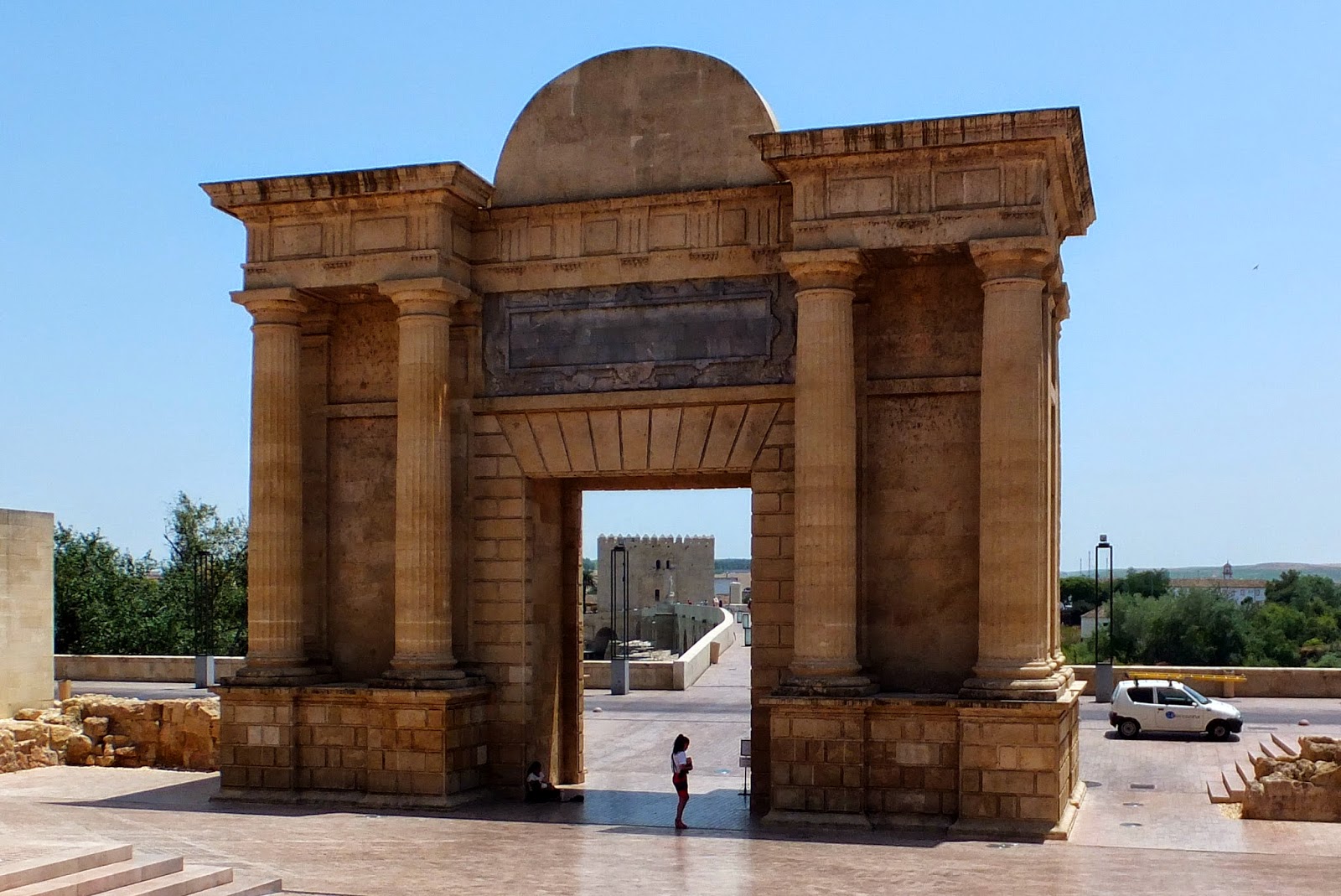Travel Date 26th - 29th June 2013.
Click on any picture to see a larger version.
The AVE train from Madrid Atocha to Cordoba was smooth and swift. I took a cheap cab from the Renfe station to La Fuente Apartmentos, which I had booked through hotel.info. The apartment was in the old town in Calle San Fernando.
Although it was on a slope the area is not, thankfully, as vertical as Lisbon's Alfama. I spent the first afternoon strolling around the district and soaking up the atmosphere.
The tapas arrangements were similar to Hondarribia: buy an inexpensive wine and add a snack from the bar for another euro or two.
For breakfasts I bought some ham, cheese and eggs at a handy small market shop and cooked in the apartment. I ate fish at most evening meals and soups, tapas or salads like this for lunches:
The weather on my journey was consistently hot. There was only one day under 30 C from the day I arrived in Portugal until I later departed Crete for Paris. I made good use of air-conditioning everywhere I stayed, but also made good use of SPF50+ in my morning routine before heading outdoors.
The old town was very similar to Lisbon's Alfama and Granada's Albaicin. Cordoba's old town is less steep, less constricted and more modernised in some sections, with lots of cafes and restaurants.
I spent the second day seeing the Mezquite, the vast mosque which became a cathedral without losing its Moorish character when the Christians re-took Cordoba. I also wandered around the old buildings nearby, including the Royal Stables and the Alcazar de Los Reyes Cristianos (Palace-fortress of the Christian Kings) which includes some wonderful gardens. I will post on those sites after this. I wandered home via the Jewish section.
I experimented with the bus system, sometimes getting on buses just to see where they went. At one point that led to me spending 20 minutes at the end of the line while the driver had his break, but I also saw a lot of the suburbs that way. Outside the Old Town Cordoba is a typical modern European city.
I spent some time wandering through the local shops after enjoying a delicious set-course unpronounceable lunch of unidentifiable ingredients in this restaurant.
I have no idea what I was fed but mine host and his friends enjoyed experimenting with their poor knowledge of English and my worse knowledge of Spanish. It tasted good and I had no after-effects.
Like many European cities the riverside is ignored. Upstream from the old bridge it seems almost forgotten, walled off from the nearby roads.
Downstream the ancient structures show how it was used in mediaeval times, with remnants preserved of the waterwheels used to provide power and pump water to the town, and millhouses and other old structures dividing the river into separate streams.
I walked across the old bridge to the museum (the square building framed by the arch) but found it was closed for the siesta, so settled for a cold beer instead on a 37 C afternoon after wandering the other side of the river on the buses.
Posts on the Mezquite and Alcazar will be next.
Cheers, Alan.





















No comments:
Post a Comment